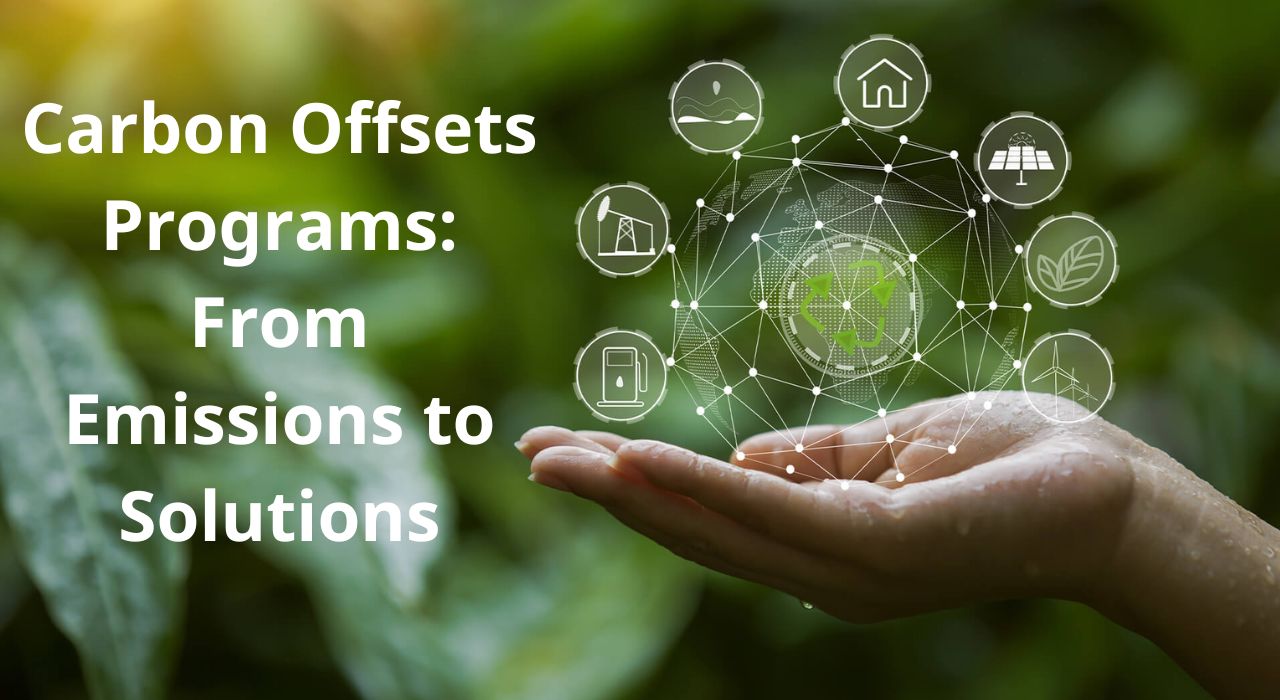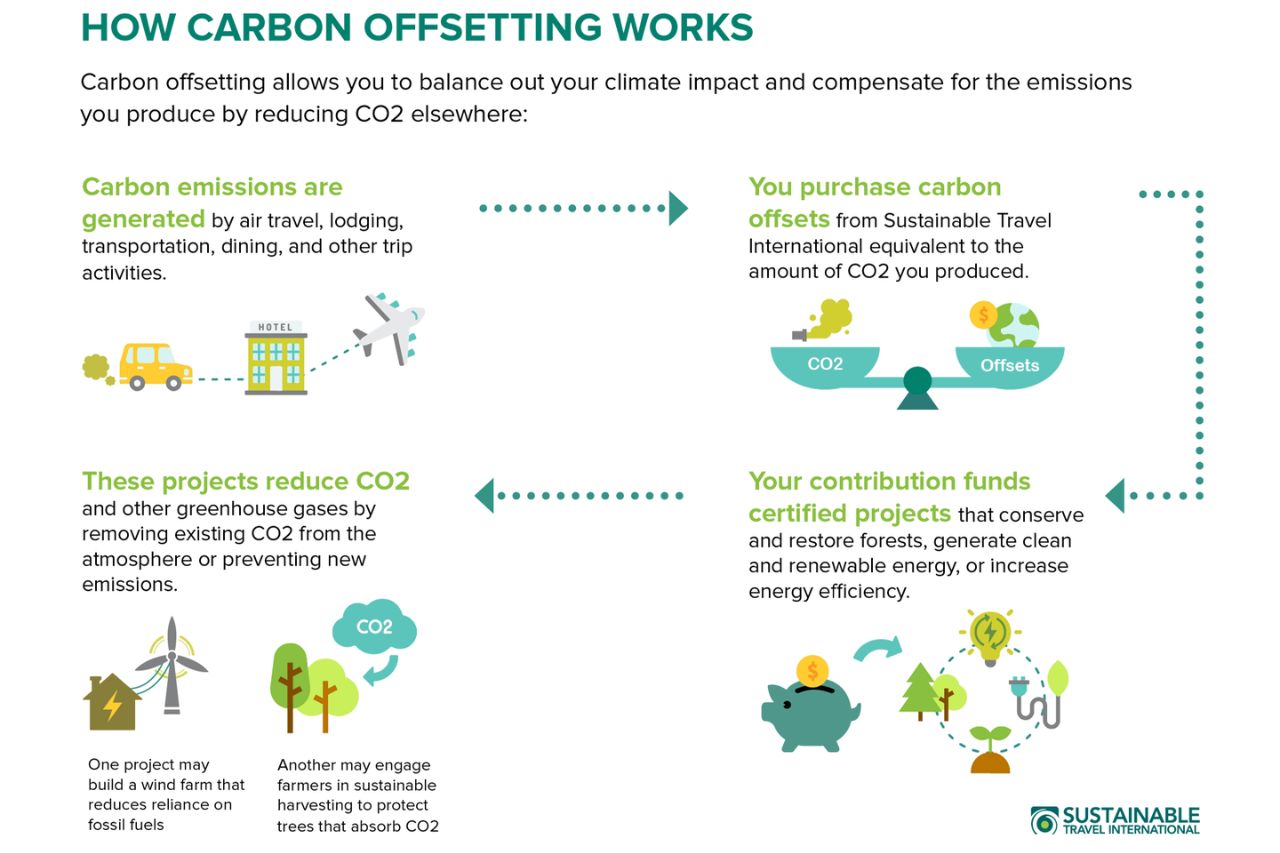Carbon Offset Programs: The Role of Carbon Offset Programs in Environmental Stewardship

Discover the vital role of carbon offset programs in environmental stewardship. Explore how these programs transform emissions into sustainable solutions, mitigating climate change impacts. Learn about the strategies employed, such as investing in renewable energy projects and reforestation initiatives, and their profound impact on curbing carbon footprints.
Gain insights into the positive environmental outcomes achieved through offsetting practices, paving the way towards a greener and more sustainable future. Dive into this informative article to understand how carbon offset programs contribute to the global effort of protecting our planet for generations to come.
Definition and Explanation of Carbon Offset Programs
Carbon offset programs are initiatives designed to mitigate the environmental impact of carbon emissions by investing in projects that reduce or remove greenhouse gases from the atmosphere. These programs work on the principle of "offsetting" carbon emissions by supporting activities that counterbalance or compensate for the carbon footprint generated by individuals, organizations, or industries.
A carbon offset program involves quantifying the amount of carbon emissions produced and then investing in projects that lead to an equivalent reduction in emissions. These projects can include activities such as renewable energy production, reforestation and afforestation efforts, energy efficiency improvements, and methane capture initiatives. By supporting these projects, carbon offset programs aim to achieve a net-zero carbon footprint or even a negative carbon footprint, where more emissions are offset than produced.
Importance of Understanding Carbon Offset Programs
Understanding carbon offset programs is crucial for business with several reasons:
1. Climate Change Mitigation: Carbon offset programs play a significant role in the global effort to mitigate climate change. By supporting projects that reduce or remove greenhouse gas emissions, these programs contribute to the overall reduction of atmospheric carbon dioxide levels, helping to slow down the rate of global warming.
2. Environmental Responsibility: As individuals, organizations, and businesses become more aware of their carbon footprint, it becomes essential to take responsibility for the emissions generated. Understanding carbon offset programs allows individuals and entities to actively participate in environmental stewardship by offsetting their emissions and contributing to a more sustainable future.
3. Corporate Social Responsibility: For businesses, carbon offset programs are an integral part of corporate social responsibility initiatives. By engaging in these programs, companies demonstrate their commitment to environmental sustainability and showcase their efforts to reduce their ecological impact.
4. Positive Public Perception: With increasing public awareness and concern about climate change, consumers and stakeholders are actively seeking environmentally responsible companies and products. By understanding and implementing carbon offset programs, businesses can enhance their reputation and differentiate themselves as environmentally conscious entities.
5. Regulatory Compliance: In some regions, carbon offset programs are part of regulatory frameworks aimed at reducing greenhouse gas emissions. Understanding these programs is essential for compliance with relevant environmental regulations and ensuring business operations align with sustainability goals.
In summary, understanding carbon offset programs is crucial for addressing climate change, taking environmental responsibility, maintaining corporate social responsibility, enhancing public perception, and complying with regulations. By actively engaging in these programs, individuals and organizations can contribute to a more sustainable and greener future.
How Carbon Offset Programs Work
Carbon offset programs are instrumental in combating climate change and reducing greenhouse gas emissions. Understanding how these programs work is essential for individuals and organizations seeking to offset their carbon footprint and contribute to a more sustainable future

1. Quantifying Carbon Footprint: The first step in a carbon offset program is to measure the carbon footprint generated. This involves assessing the amount of greenhouse gases emitted through activities such as energy consumption, transportation, and production processes. Accurate quantification allows individuals and organizations to determine the extent of their emissions and identify areas for improvement.
2. Selecting Offset Projects: Once the carbon footprint is quantified, the next step is to select appropriate offset projects. Carbon offset programs offer a range of projects to choose from, including renewable energy projects, forestry initiatives, and methane capture programs. Each project has a specific methodology for calculating carbon reduction or removal, ensuring transparency and credibility in offsetting efforts.
3. Investing in Offset Projects: After selecting the offset projects, individuals or organizations invest in them financially. This financial contribution supports the implementation and maintenance of the projects, enabling them to reduce or remove greenhouse gas emissions. Funds may be directed towards installing solar panels, supporting reforestation efforts, or implementing energy-efficient technologies, depending on the chosen offset project.
4. Offsetting Emissions: Once the offset projects are operational, they begin offsetting emissions. For every ton of carbon dioxide equivalent (CO2e) emitted, an equivalent amount of greenhouse gases is either reduced or removed by the offset projects. This offsetting process helps individuals and organizations achieve carbon neutrality or even carbon negativity, where their total emissions are balanced or exceeded by the emissions reduction or removal achieved through the offset projects.
It is important to note that Carbon offset programs should not be seen as a standalone solution to climate change. It should be complemented by other sustainable practices, such as using Carbon Negative Material.
One innovative approach to carbon offset programs is the use of carbon-free bioplastics, such as those developed by AirX company. Traditional plastic production contributes significantly to greenhouse gas emissions and environmental pollution. However, AirX company has developed a breakthrough solution by producing bioplastic made from coffee grounds, baggase,...
These bioplastics have a significantly lower carbon footprint compared to traditional plastics. Our innovative coffee-based polypropylene has attracted the attention of many of the biggest names in the global market, including Uniqlo, Nestle, Paula's Choice, and intercontinental Hotel Groups
By using AirX company's carbon-free bioplastics, businesses and individuals can reduce their carbon emissions and environmental impact. This sustainable alternative offers similar functionality and durability to traditional plastics but with the added benefit of being biodegradable and compostable, thus minimizing waste generation and pollution.
Benefits of Carbon Offset Programs
Carbon offset programs offer a range of benefits that contribute to the collective efforts of reducing greenhouse gas emissions, mitigating climate change, and fostering positive impacts on local communities and ecosystems.
Reduction of Greenhouse Gas Emissions
One of the primary benefits of carbon offset programs is the significant reduction of greenhouse gas emissions. By investing in offset projects, individuals and organizations can actively participate in initiatives that decrease or remove carbon dioxide and other greenhouse gases from the atmosphere. These projects, such as renewable energy installations or reforestation efforts, directly contribute to lowering overall emissions and combating climate change.
Contribution to Global Climate Change Mitigation Efforts
Carbon offset programs play a vital role in global climate change mitigation efforts. The reduction and removal of greenhouse gases achieved through these programs contribute to the overall goal of limiting global temperature rise and mitigating the adverse impacts of climate change. By offsetting their own carbon footprints, individuals and organizations become part of a broader movement to create a more sustainable and resilient planet for future generations.
Positive Impact on Local Communities and Ecosystems

Beyond climate change mitigation, carbon offset programs bring about positive impacts on local communities and ecosystems. Many offset projects have co-benefits that extend beyond emissions reduction. For instance, investments in renewable energy projects can provide clean and affordable energy access to underserved communities, improving their quality of life. Reforestation initiatives not only absorb carbon dioxide but also restore habitats, conserve biodiversity, and enhance local ecosystem resilience.
Moreover, carbon offset programs often prioritize social and environmental co-benefits, such as job creation, community development, and sustainable land management. These programs empower local communities, support sustainable livelihoods, and foster a sense of environmental stewardship among the people involved.
In summary, the role of the carbon offset program is undeniable, they contribute to global climate change mitigation efforts, reduce greenhouse gas emissions, and have positive impacts on local communities and ecosystems. By actively participating in these programs, individuals and organizations can make a meaningful difference in addressing climate change while promoting sustainable development and environmental well-being
Contact us
AirX is the world's first carbon-negative bio-material made from coffee grounds manufacturer.
We specialize in producing bio-based composites using recycled carbohydrates derived from by-products such as coffee grounds, coconut husk, husk, and bamboo. Our goal is to promote sustainability through the use of eco-friendly materials.
We are always here to help and provide the best service possible. If you have any questions or would like to receive advice and feedback directly from our sales staff, please do not hesitate to contact us. You can reach us through:
- Whatsapp: +84 969 742 950
- Email: [email protected]
We look forward to hearing from you!

